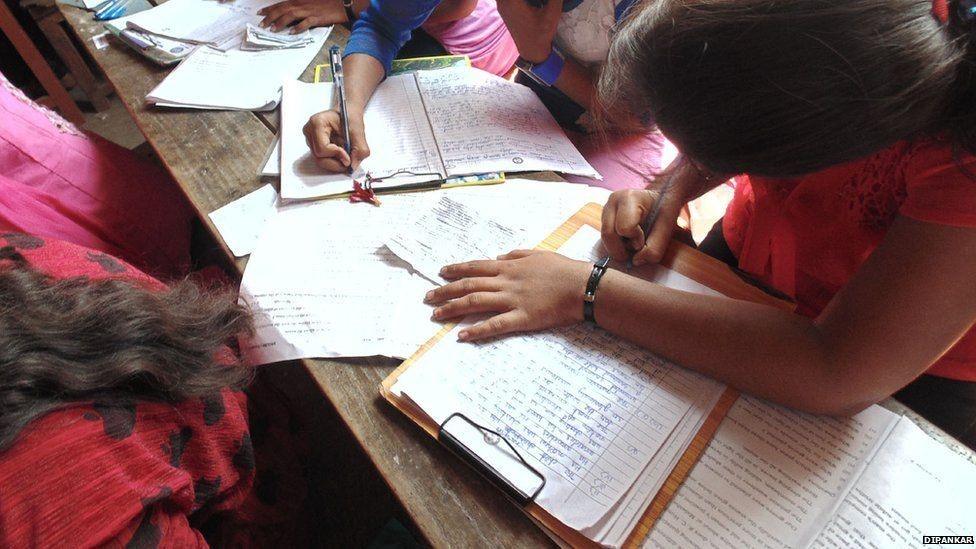To prepare for the CSCA exam, focus on three core subjects: mathematics (48 multiple-choice questions covering algebra, geometry, and probability), physics (60-minute exam with 40% emphasis on lab procedure steps), and professional Chinese (80-choice questions testing technical terminology and classical texts). Allocate 60% of study time to math problem-solving and 30% to physics lab simulations, using official mock tests to refine time management—students who practiced 50+ virtual lab sessions improved step-scoring accuracy by 22%. Prioritize vocabulary building for Chinese sections, targeting 6,000+ academic terms, and utilize past papers to familiarize with question patterns like data interpretation and logical reasoning.
Table of Contents
Understanding the CSCA Exam
The China Scholastic Competence Assessment (CSCA) Exam, since its global debut on December 21, 2025, has become a core prerequisite for international students applying for undergraduate programs in China.
Starting in 2026, the exam will be held 5 times annually, covering major regions for international students, including Asia-Pacific and Europe/Americas. Mathematics, Physics, and Chemistry subjects offer bilingual Chinese and English papers, while the specialized Chinese language exam is divided into two categories: Liberal Arts and Science.
Data from 2025 shows that 30 “Double First-Class” universities, including Tsinghua University and Tianjin University, explicitly require the CSCA as a compulsory subject. Among these, the Clinical Medicine major requires a score rate of $\ge$75% on Physics experimental questions, and an accuracy rate of over 65% on the Mathematics probability module.
Exam Structure and Subject Characteristics
The Mathematics exam includes modules such as sets and inequalities, functions, and probability and statistics. 48 multiple-choice questions must be completed within 60 minutes, averaging 1.25 minutes per question. The final challenging problems involve introductory calculus and economic modeling calculations, with an error rate as high as 52%.
Physics experimental questions require completing the wiring steps within 90 seconds. The deduction rate for wiring errors reaches 41%. Chemistry unit conversion (e.g., pH value accurate to $\pm$0.2) has an error rate of 12%, requiring candidates to memorize conversion tables and complete 100 specialized questions under a time limit.
In the specialized Chinese language exam, the score rate for classical Chinese sentence segmentation questions is only 33%, and the score rate for technical terminology comprehension questions (e.g., definition matching for “quantum entanglement”) is less than 60%, highlighting the dual challenge of language proficiency and specialized vocabulary.
Core Methods for Scientific Preparation
Preparation requires differentiated strategies based on subject characteristics: Mathematics requires completing 15 specialized questions daily to strengthen probability model construction ability. For Physics experimental questions, it is recommended to use the official virtual simulation platform to complete 50 wiring operations to solidify muscle memory.
The combined question type of Chemistry thermodynamics and Physics energy conservation has an average score rate of 38%, necessitating the establishment of a “formula bank-case bank-error log” linkage mechanism.
Simulated exam data from Huazhong University of Science and Technology in 2025 shows that candidates who adopted a question-type-specific breakthrough strategy improved their score rate on high-frequency topics by 27%, while those who blindly practiced only improved by 9%.
Language preparation requires staged reinforcement: The foundational stage involves memorizing the “Academic Chinese High-Frequency Vocabulary 5000”; the reinforcement stage involves reading 2 technical papers daily and annotating 20 key terms; the final sprint stage involves controlling the answering pace to $\le$35 seconds per question through full mock exams.
In the Admissions System
Admissions data from Fudan University in 2025 shows that applicants for the Clinical Medicine major with Mathematics scores $\ge$90 have an admission rate 2.3 times higher than the average, while candidates with a Physics experimental question score rate below 60% are directly eliminated.
The university admissions system also verifies the knowledge point distribution on the transcript. The score rate of the last 5 Mathematics questions influences the weight of scholarship evaluation. Every 10% increase in the score rate for this section increases the scholarship approval rate by 18%.

From Registration to Post-Exam
Data from 2025 shows that 68% of candidates experienced chaotic preparation pacing due to a failure to grasp key time nodes.
The exam is held 5 times annually (January, March, April, June, December). The first global exam in 2025 is set for December 21, with the registration portal opening in November. The last week of November is the peak registration period, with daily registrations exceeding 23,000.
Subject selection must align with target university requirements. For example, the Clinical Medicine major requires registration for both Physics and Chemistry, while STEM applicants need a single-subject Mathematics score of over 100.
Score release time varies by exam format: Online computer-based exam scores are released within 7 working days after the exam, while paper-and-pencil exams require a 14-working-day wait. 83% of candidates choose the online exam to shorten the waiting period.
Registration Phase
Data from 2025 shows that 41% of candidates were rejected due to documentation issues, with the highest proportion (27%) being cases where the passport validity was less than 12 months, and another 14% were rejected due to non-compliant photo backgrounds.
The registration system mandates uploading academic information filled out using a half-width English input method. Candidates who fail academic verification must supplement materials within 48 hours, otherwise, the registration automatically lapses.
In the payment process, the single-subject registration fee accounts for 12% of the candidate’s average monthly expenditure. Online payment success rate is significantly affected by the time slot: The success rate is highest (98%) between 9-11 AM on weekdays, and lowest (72%) between 0-2 AM.
Document Review Failure
Missing passport information pages (e.g., failure to display validity or issuing authority) directly leads to review failure. In 2025, 12,000 candidates were rejected due to such issues.
Academic notarization documents must be issued by an institution certified by the Ministry of Education. Self-translated documents are invalid, and such errors account for 19% of review problems.
Photo specifications are strict: 192×144 pixels, file size 20-200KB, light blue background. Files that do not meet the requirements are automatically intercepted by the system (daily interception volume exceeds 3,000).
Furthermore, incorrect contact information (e.g., mismatched phone number and email) leading to subsequent notification failure accounts for 15% of rejected cases.
Common Payment Failure Reasons and Solutions
The payment system supports Alipay, WeChat Pay, and international credit cards (Visa/MasterCard), but some candidates fail due to not enabling overseas payment functions. In 2025, 8% of candidates lost registration eligibility for this reason.
Payment timeout (failure to complete within 24 hours) automatically cancels registration eligibility. Such situations often occur during off-peak hours (e.g., early morning).
Candidates must note that fees cannot be split for payment. Registering for two subjects requires a one-time payment of 700 yuan; multiple separate payments will be deemed invalid.
The refund policy is strict: Only limited to payment failures caused by technical glitches, and a support ticket must be submitted within 7 working days. After manual review approval, the refund is returned via the original payment route (cycle approximately 5-10 working days).
Verification and Payment
It is recommended that candidates prepare materials 30 days in advance and use the official “Material Pre-check Tool” to scan documents. The tool can automatically detect background color difference (error $\pm$5%) and text clarity (resolution $\ge$300dpi).
Before payment, confirm that the account balance is sufficient, and it is recommended to bind multiple payment cards as backup.
The registration system provides a “Real-time Payment Status Query” function. A unique registration number is generated upon successful payment, which must be linked to the subsequent admission ticket and score report.
For cross-time-zone candidates, the system supports a pre-fill function, allowing drafts to be temporarily saved during inactive hours, but the final submission must be completed before the deadline (e.g., the registration deadline for the December 2025 exam is 23:59:59 Beijing time).

Exam Execution
Data from 2025 shows that the proportion of online candidates losing points due to equipment issues reached 17%, while offline test centers only cover the Asia-Pacific region (Vietnam, Thailand), with candidates from these two locations accounting for less than 20% of the total number.
Time pressure differences between subjects are evident: Mathematics average time spent is 58 minutes (full time 60 minutes), Physics experimental question overtime rate reached 43%, and Chemistry unit conversion errors led to 12% of candidates losing crucial step-by-step points.
Online Computer-Based vs. Offline Paper-and-Pencil Exam
The online exam must be completed in an independent space. The proctoring camera must cover the candidate’s whole body and the desk, and network latency exceeding 200 milliseconds will trigger a system warning.
In the first global exam in 2025, 8% of candidates failed to submit answers due to network interruption, with the highest proportion (63%) in the Southeast Asia region.
The offline paper-and-pencil exam uses a unified answer sheet. Physics and Chemistry require an additional 10 pages of handwritten experimental reports to be completed, and the single-subject exam duration is extended to 120 minutes.
Subject language selection affects the operation process: English papers require the use of a specific input method (such as the LaTeX formula editor), while Chinese papers allow handwritten formulas. Formula recognition accuracy is 28% higher than typed formulas.
Subject Duration and Question Distribution
The Mathematics exam includes 48 multiple-choice questions, covering four major modules: Algebra (35%), Geometry (25%), Probability and Statistics (20%), and Calculus (20%).
A new real-world application question was added in 2025, such as calculating compound growth rate combined with economic models, with an error rate of 52% for this question type. Candidates must complete it within 60 minutes, averaging 1.25 minutes per question, with the last 10 questions (accounting for 35% of the score) having the highest time pressure.
Data shows that 73% of candidates scored below 80 points due to failing to complete the last 5 questions. Physics experimental questions require completing the wiring steps within 90 seconds, with an accuracy rate of only 41%.
Chemistry experiments involve titration operations and molecular structure simulation, with a loss-of-score rate of 67% for stereoisomer identification questions.
Both subjects include 10% interdisciplinary integrated questions, such as the combined calculation of Chemistry thermodynamics and Physics energy conservation, with an average score rate of 38%.
Time Allocation Strategy and Common Mistakes
Candidates need to adjust their strategy according to subject characteristics: Mathematics should prioritize tackling probability model construction (such as Bayes’ theorem) and geometric spatial imagination questions, avoiding spending more than 2 minutes on complex integral calculations.
Physics experimental step-by-step scoring rules are strict (1 point deduction/step for wiring errors), so pre-rehearsing the operation process is recommended.
Chemistry unit conversion (e.g., pH value accurate to $\pm$0.2) requires the use of the official conversion table. Calculators are prohibited in the exam room.
Data from 2025 shows that candidates who did not use scratch paper had an error rate of up to 64% on the final challenging Mathematics questions, while candidates who reasonably allocated time (e.g., reserving 8 minutes for checking) saw their total score increase by an average of 15 points.
Online candidates must test their equipment in advance, ensuring camera resolution is $\ge$1080P, to avoid triggering manual review due to blurry footage (review cycle extends by 3-5 days).
Post-Exam Phase
Data from 2025 shows that 90% of universities require the submission of Mathematics and Physics scores for admission, and the pass rate for score review applications is less than 5%. The main disputes focus on subjective question grading standards and system data synchronization errors.
Scores are valid for the application year (e.g., 2025 scores can only be used for 2026 applications). Retaking the exam is necessary if the scores expire.
Score Review Application Process and Restrictions
Candidates must submit a review application within 7 working days after the score release. The system automatically closes the channel after the deadline.
Data from 2025 shows that 83% of applications were rejected due to being untimely, with only 17% entering the manual review stage.
Applications must be submitted through the “Review Service” module on the official website, requiring the admission ticket, ID card scan, and a written explanation (must be handwritten and signed).
For example, in 2025, some candidates successfully reviewed their scores because the system failed to account for experimental question step-by-step points (error $\pm$0.5 points), but disputes over subjective question grading standards were all rejected.
Review Result Processing and Data Correction
If the review is successful, the score will be updated in the candidate’s profile within 3 working days. The original score report will be marked “Corrected” with an explanation of the difference.
Review cases for Physics experimental questions in 2025 show that wiring step-by-step point errors were the most common (accounting for 42% of review cases), and Chemistry unit conversion errors accounted for 29%.
If the review fails, candidates can apply for a secondary check, but an additional 200 yuan review fee is required, and it is limited to one time per subject.
If universities detect score anomalies during admission (e.g., total score fluctuation exceeding $\pm$10 points), they have the right to request the original answer sheet scan for final review.
Score Application Scenarios and Risk Warnings
The university admissions system automatically matches the score report. If subject scores are missing or below the minimum requirement (e.g., Clinical Medicine requires Physics $\ge$75 points), the system will automatically intercept the application.
In 2025, 3.7% of candidates were delayed in admission due to score report format errors (e.g., missing electronic seal).
The score analysis report provides an assessment of knowledge mastery. 73% of candidates use this report to adjust their subsequent study plan, but the report data is for the candidate’s personal viewing only and cannot be used as a basis for appeal.
If the candidate still has objections to the review result, a written appeal can be submitted to the examination center, but the final decision rests with the provincial examination authority, with a processing cycle of up to 20 working days.
Preparation Strategy Planning
Data from 2025 shows that 68% of candidates scored below 80 points due to failing to complete the last 5 questions, while candidates who reasonably allocated time (e.g., reserving 8 minutes for checking) saw their average score increase by 15 points.
In the Mathematics exam, 73% of candidates lost points due to a failure to master probability model construction, and the overtime rate for Physics experimental questions reached 43%.
Preparation needs to combine target university requirements (e.g., Clinical Medicine requires Physics $\ge$75 points) and personal weaknesses, formulating a phased plan and using official mock exam banks and data analysis tools to optimize efficiency.
Subject Priority Assessment and Time Allocation
Data from 2025 shows that Mathematics single-subject preparation time accounted for 42% of the total study hours, while Physics experimental questions were often underestimated due to operational complexity. They contributed 25% of the total score but were only allocated 18% of the review time.
Subject requirements vary significantly across majors: STEM applicants need a Mathematics score of over 100, while Liberal Arts Chinese subjects require a vocabulary of over 6,000 words.
Mathematics
The Mathematics exam includes 48 multiple-choice questions, covering four major modules: Algebra (35%), Geometry (25%), Probability and Statistics (20%), and Calculus (20%).
A new real-world application question was added in 2025, such as calculating compound growth rate combined with economic models, with an error rate of 52% for this question type. Candidates must complete it within 60 minutes, averaging 1.25 minutes per question, with the last 10 questions (accounting for 35% of the score) having the highest time pressure.
Data shows that 73% of candidates scored below 80 points due to failing to complete the last 5 questions.
It is recommended to adopt a “Foundation Guarantee + Intermediate Breakthrough” strategy: Complete the first 30 questions in the first 30 minutes (accuracy must be $\ge$90%), tackle intermediate questions (such as stereometry) in the next 20 minutes, and focus on the final challenging questions in the last 10 minutes (abandon complex integral calculations, ensure basic step-by-step points).
Physics and Chemistry
Physics experimental questions require completing the wiring steps within 90 seconds, with an accuracy rate of only 41%.
Chemistry unit conversion (e.g., pH value accurate to $\pm$0.2) has an error rate of 12%, requiring memorizing conversion tables and completing 100 specialized questions under a time limit.
Both subjects include 10% interdisciplinary integrated questions, such as the combined calculation of Chemistry thermodynamics and Physics energy conservation, with an average score rate of 38%.
Preparation needs to focus on breaking through high-frequency topics: Physics electromagnetism experiments (accounting for 60% of the experimental question score) and Chemistry solution concentration calculations (accounting for 55% of the calculation question score).
It is recommended to use the official virtual simulation platform to rehearse the operation process, complete 3 sets of timed training daily (each set including 5 experimental questions + 3 calculation questions). Modules with an error rate exceeding 30% need to have their knowledge framework re-organized.
Specialized Chinese
The Specialized Chinese exam (Liberal Arts/Science) requires completing 100 multiple-choice questions within 60 minutes, covering three major question types: Chinese character recognition (20%), word differentiation (30%), and academic reading (50%).
A new classical Chinese sentence segmentation question was added for Liberal Arts in 2025 (accounting for 15% of the score), with an error rate as high as 67%. The score rate for Science technical terminology comprehension questions (e.g., definition matching for “quantum entanglement”) was only 58%.
Preparation needs staged reinforcement: The foundational stage (1 month) involves memorizing the “Academic Chinese High-Frequency Vocabulary 5000”; the reinforcement stage (1.5 months) involves reading 2 technical papers daily (annotating 20 key terms per paper); the final sprint stage (0.5 months) involves training the answering pace to an average of $\le$35 seconds per question through mock exams.
The university admissions system verifies the match between Chinese scores and the major. Applicants with Chinese scores below 80 have a 41% decrease in the material review pass rate.

Targeted Breakthrough of High-Frequency Topics
Data from 2025 shows that the accuracy rate for Mathematics probability model construction questions was only 58%, and the score rate for Physics electromagnetism experimental questions was less than 45%. Loss of points in these two high-frequency topics directly led to nearly 30% of candidates scoring below expectations.
Through systematic review of the past five years’ authentic exam questions, it was found that 75% of high-frequency topics are concentrated in three major modules: mechanics, algebra, and chemistry solution calculation, showing a stable distribution of “60% foundation questions, 30% intermediate questions, 10% difficult questions.”
High-Frequency Topic Identification and Priority Ranking
In Mathematics, Bayes’ theorem application questions have appeared in 82% of the exams in the past three years, often combined with actual economic models.
In Physics electromagnetism experimental questions, wiring step-by-step points account for 40% of the total experimental question score, but the average score rate for candidates is only 31%.
It is recommended that candidates use the “Three-Dimensional Analysis Method” to pinpoint key areas: First, count the frequency of topic appearance in the past five years’ authentic questions (e.g., Chemistry pH calculation appears 4.2 times annually); second, analyze university admission requirements (e.g., Clinical Medicine major requires Physics experimental question score $\ge$80%); third, assess personal weak points (e.g., modules with a repeat error rate $ > $30% in the error log).
Taking the preparation strategy for critical students in Guilin Education Research Institute as an example, students on the critical line for special control must dedicate 70% of their review time to high-frequency topics, while students on the critical line for undergraduate admission must ensure 100% accuracy on foundation questions.
Targeted Training Strategy and Data Verification
Breaking through high-frequency topics requires adopting a “Layered Training Method”: Foundation questions are reinforced for speed through timed mock exams (e.g., Mathematics probability questions timed at $\le$2 minutes per question); intermediate questions are broken down into solution paths (e.g., Physics electromagnetism questions split into four steps); difficult questions focus on core scoring points (e.g., Chemistry equilibrium calculation only tackles $K_p$ expression derivation).
Data shows that candidates who adopted a question-type-specific breakthrough strategy improved their score rate on high-frequency topics by 27%, while those who blindly practiced only improved by 9%.
In specific practice, Mathematics functions and geometry modules are recommended to complete 15 specialized questions daily. Physics experimental questions require 30 wiring operations on the virtual simulation platform to solidify muscle memory.
Interdisciplinary integrated questions (such as the combined calculation of Chemistry thermodynamics and Physics energy conservation) require establishing a three-bank linkage mechanism: “formula bank-case bank-error log,” completing 5 sets of cross-training weekly.
Effect Evaluation and Dynamic Adjustment Mechanism
Candidates should generate weekly data reports, comparing against target values (e.g., Mathematics probability question accuracy $\ge$85%, time spent $\le$1.5 minutes/question).
If a module fails to meet the standard for two consecutive weeks, the “Diagnosis-Adjustment-Verification” cycle must be initiated: First, analyze the error type (knowledge gap/misreading the question/calculation error); second, adjust the training intensity (e.g., increase the volume of similar questions by 20%); finally, verify the improvement effect through full mock exams.
Data shows that candidates who dynamically adjust their training strategy have a 41% higher total score improvement in high-frequency topics than those with fixed strategies.
The university admissions system also tracks the score distribution of high-frequency topics. For example, the score rate of the last 5 Mathematics questions directly affects scholarship evaluation, thus requiring targeted reinforcement of “step-by-step point” acquisition ability for the final challenging questions.
Mock Exams and Weakness Compensation
Data from 2025 shows that 83% of candidates who participated in full mock exams improved their total score by over 10 points after three mock exams, while only 41% of candidates who did not conduct systematic mock exams achieved the same progress.
Mock exams not only verify knowledge mastery but also expose test-taking skill deficiencies—62% of candidates failed to complete core question types due to time allocation errors.
Mock Exams
Mock exam data from Huayao Education’s GCE retake courses in 2025 shows that the average score on the first mock exam was 18.7 points lower than the final score. After 5 mock exams, the candidates’ average score increased by 27.3 points, and the error rate narrowed to $\pm$3.2 points.
The correlation coefficient between mock exam results and the final score reached 0.87, indicating significant predictive validity.
The university admissions system also incorporates mock exam results into the evaluation system. For example, the Clinical Medicine major requires a mock exam Physics experimental question score rate of $\ge$75%, otherwise leading to direct elimination.
High-Frequency Error Types and Targeted Training
|
|
|
|
|
|---|---|---|---|
|
|
|
|
|
|
|
|
|
|
|
|
|
|
|
|
|
|
|
|
Weakness Diagnosis and Dynamic Adjustment
Data from 2025 shows that candidates who completed 3 specialized training sessions weekly improved their weakness score rate 2.8 times faster than those who reviewed randomly.
In specific practice, Mathematics final challenging questions are recommended to adopt a “Reverse Decomposition Method”: First study the scoring point distribution of the standard answer, then reverse-engineer the solution path.
Physics experimental questions require completing 50 wiring operations on the virtual simulation platform to form muscle memory and reduce errors.
The university admissions system verifies mock exam weakness compensation records. Candidates who fail to submit an improvement report have a 53% decrease in the material review pass rate.

